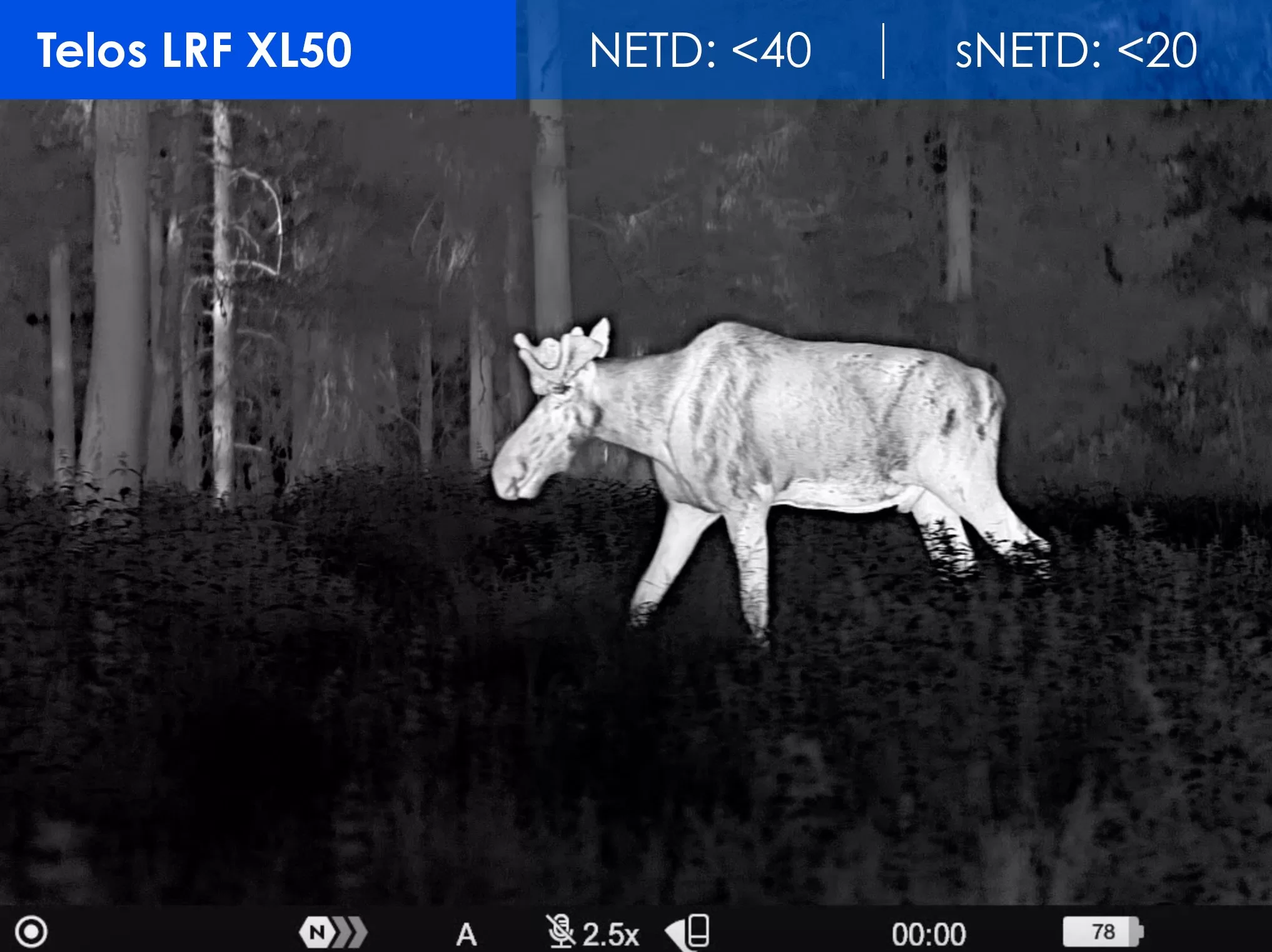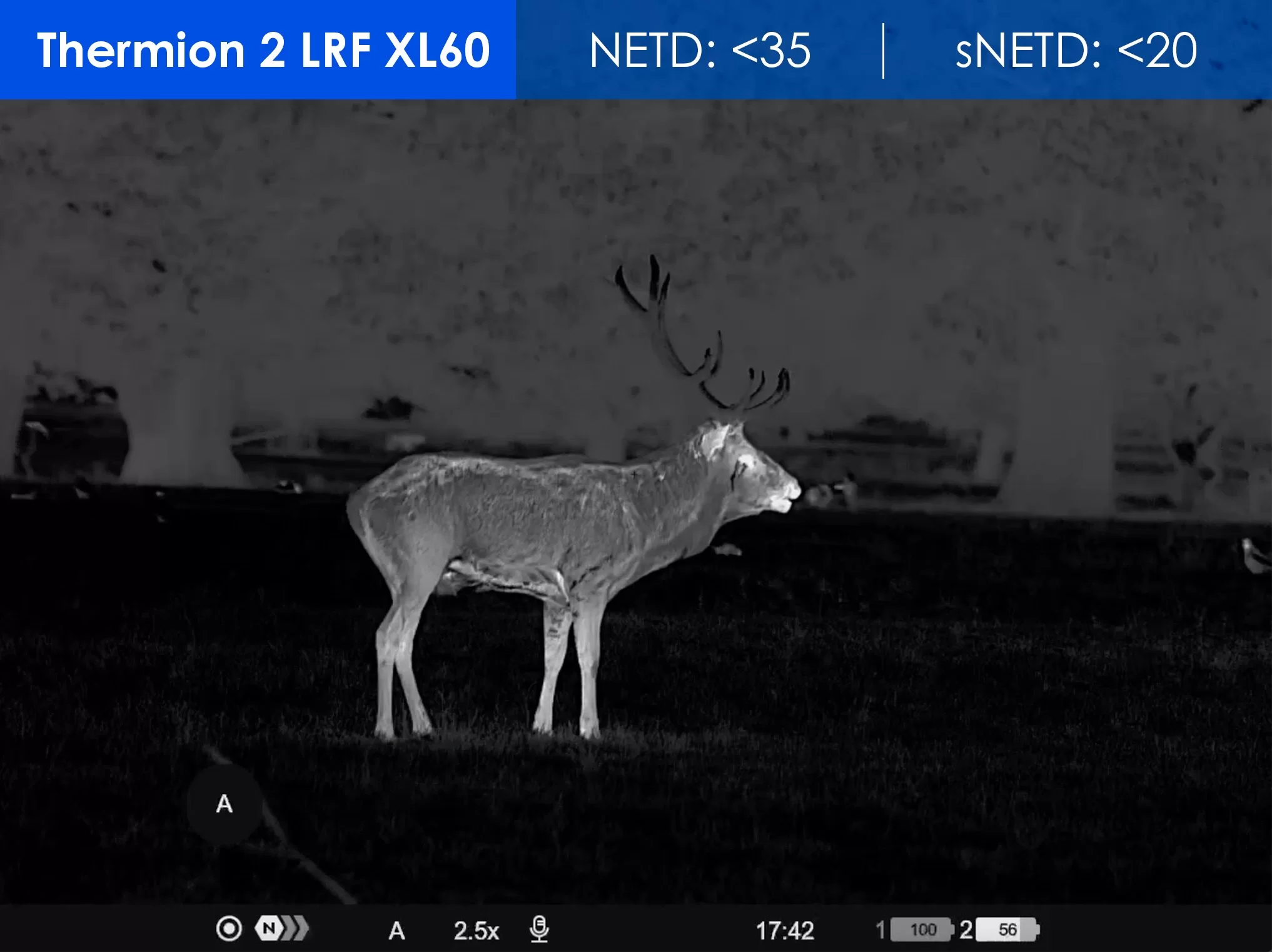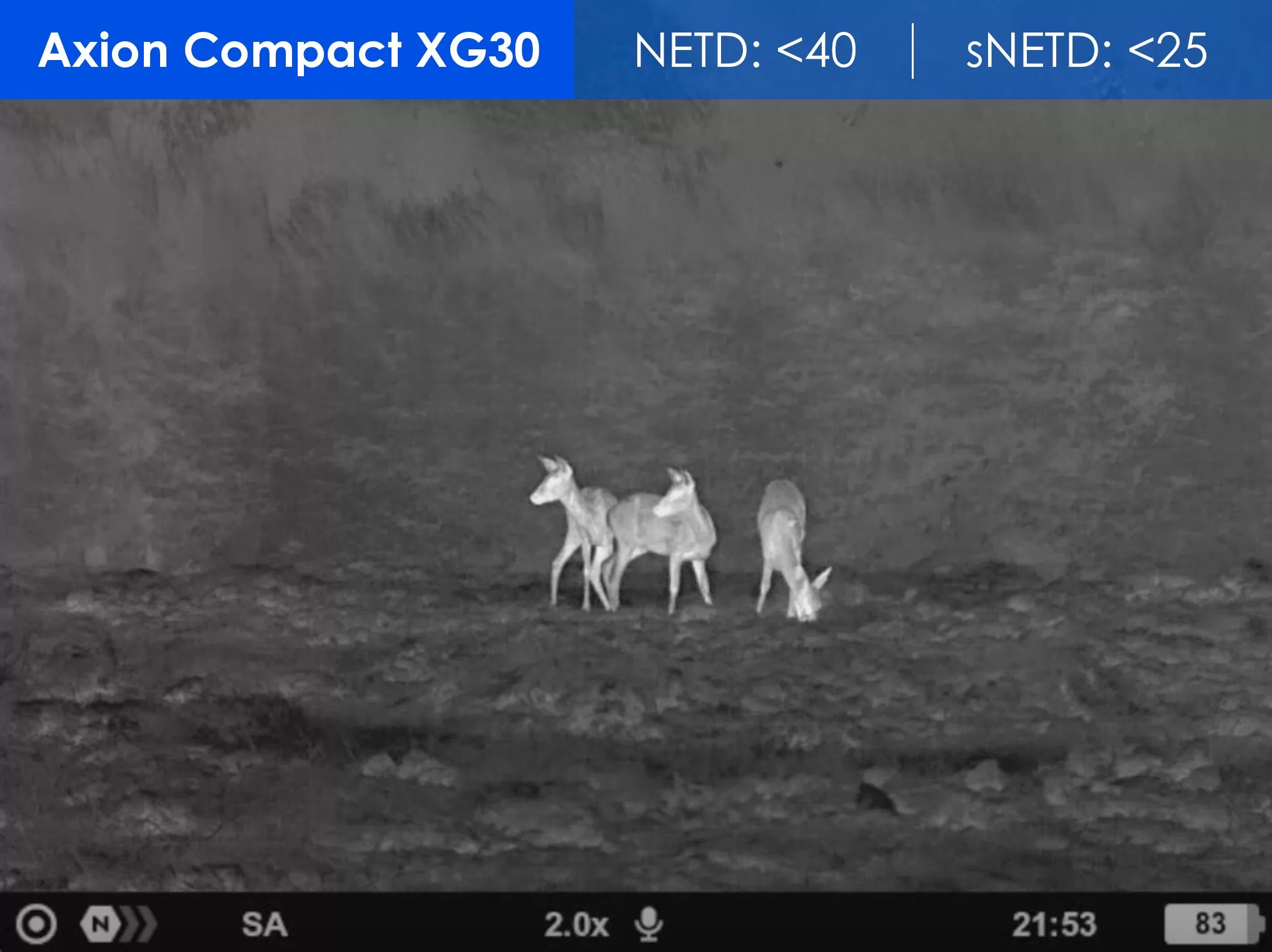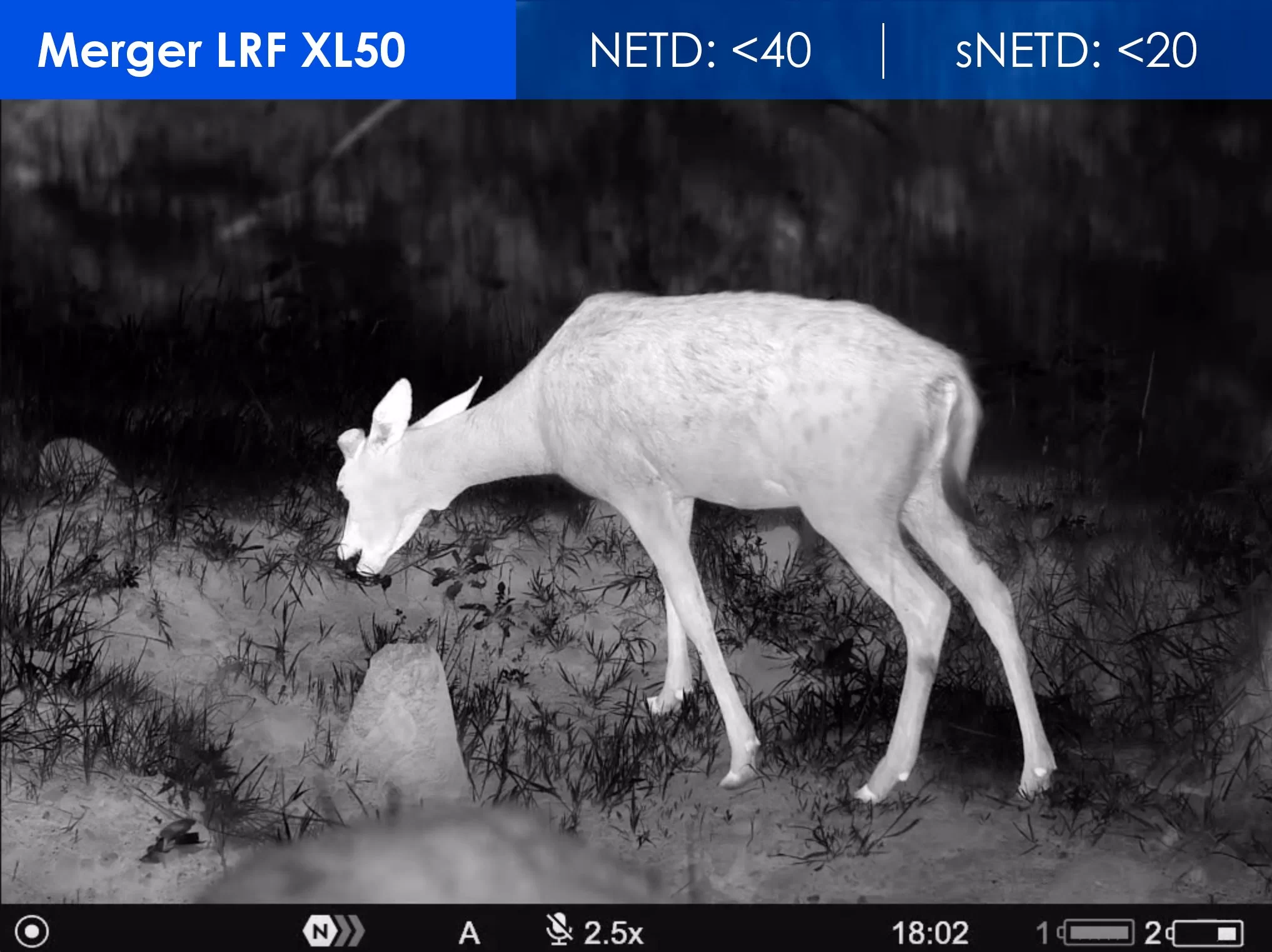Thermal imaging might help you see beyond the invisible, but that doesn’t mean there are no gray areas left. One of the most commonly discussed ones is NETD and the way it is marketed and measured.
At Pulsar, we used to share the sensor NETD. Other brands often lean towards system NETD. Now, we have decided to do both. But what’s the difference? Is one better than the other? And why are we making this move? Let’s find out.
NETD: what it is, and why it’s important
NETD is used to measure the thermal sensitivity of a device and stands for noise equivalent temperature difference. Simply put, it represents the smallest temperature difference a thermal imager can pick up on.
In even simpler words, imagine you have two thermal imagers. One has a high NETD, the other – a low. If you use the first one to look at your hand, you’ll see it as one hot patch. But if you use the second device, you’ll notice the palm and the separate fingers and maybe even where the nails are.
NETD is usually measured in mK – millikelvins. It’s an industry standard, and for easier understanding of numbers, you should know that one degree Kelvin is equal to one degree Celsius. So, if you’ve got 25 mK, it’s going to be the same as 0.025 C. Keep in mind that the two scales – Kelvin and Celsius – are not equal for measuring temperature. However, since they do have the same degree value, the direct comparison works in our case.
NETD is hugely important in situations where thermal contrast is low, for example, during rain or fog. When the weather is dry and clear, it’s really hard to tell which thermal imager has 35 and which – 25 mK NETD.
NETD is hugely important in situations where thermal contrast is low, for example, during rain or fog. In conditions like these, different objects in your field of view are likely to have a similar temperature. Then, the lower the NETD, the better you’ll be able to distinguish between different objects and understand what they are, and see minor details – just like in our example with a hand.
Nowadays, we often see NETD values of 40, 35, 25, and 18 mK. The lower the value of NETD, the more proudly is the thermal imager advertised. But keep in mind that these differences are mostly visible in humid weather conditions or labs. In field conditions, when the weather is dry and clear, it’s really hard to tell which thermal imager has 35 and which – 25 mK NETD. In those situations, spatial resolution is much more important. But let’s stick to sensitivity for now.
Sensor vs. system NETD
With thermal vision devices, there are two types of NETD you usually get: sensor and system. At Pulsar, we always share the NETD of the sensor. We get this value from Lynred – the French company that manufactures our sensors and tests them in labs.
Sensor NETD is the minimum temperature difference that the sensor can distinguish at a fixed noise level. It’s the basic sensitivity value and doesn’t take into account additional factors, such as image processing algorithms and filters. In other words, it can be further improved with the help of software.
As you can probably guess now, system (or device, or camera) NETD is sensor plus software algorithms. But is it a bad thing to improve NETD with image processing? Absolutely not – carefully and optimally selected, video processing parameters can reduce noise levels while also retaining useful signals and details.
However, it’s not uncommon for manufacturers to overuse these processing algorithms. While they may help to achieve lower system NETD, they can also diminish fine details, making the image less informative.
Another problem with overusing these algorithms is possible image lag or blurred image when you move the thermal device around. As a result, you get a device that performs decently in a static position, but, when you need to observe a scene in motion, a less-than-perfect picture arises, which can pose a huge problem, especially in thermal imaging riflescopes.
It’s important to remember that no matter how many algorithms you add to your image, you can only improve the value of your system NETD – the base sensor NETD will always be the same.
How do you compare NETD?
The trick with NETD – both sensor and system – is that the methodologies for measuring it vary. That being said, sensor manufacturers, especially European ones, typically adhere to some standards.
The measuring process takes places in laboratories and there might be minor differences across different labs. However, in Europe, the results you would get at independent testing would likely be very similar to what the manufacturers state.
With the system NETD, the story is different. While measuring is still done in labs (at least in our case), because proprietary algorithms are involved, regulating it is like regulating the Wild West – nearly impossible.
At Pulsar, we believe that you should always look at the sensor NETD first, and only then take the system NETD into account.
NETD in Pulsar devices
Up until recently, we didn’t share system NETD – we believed that sensor NETD was more objective. But from now on, when you look at the specs sheet of a Pulsar device, you’ll see two numbers: NETD and sNETD. The first will always be the sensor NETD, the number our manufacturer provides us with. The second one – system NETD – will be calculated after all the processing algorithms come into play.
The main reason we decided to introduce this second measure is to make your life slightly easier. With many manufacturers hiding their sensor NETD, it is hard for users to accurately compare the specs of thermal imaging devices. With sNETD available on our devices, you’ll be able to compare them to others more easily, while also having the true NETD value in mind.
NETD on paper and NETD in action
Now, with that being said, you should remember that these are paper values only. They are calculated in labs, not in the field. Plus, with the technology being so advanced, the existing differences are often minor.
Therefore, we always recommend testing the device in actual field conditions before purchasing if that’s possible.
Then, there is one more thing to remember. While NETD is an important value for a thermal imager, there are multiple other factors that come into play when you’re out hunting.
Optics have a huge influence on image quality. Housing can help dissipate internal heat and therefore influence how the thermal imager will perform over time. Screen quality will affect how you see in extreme conditions. The list is endless, so always, always look at the whole picture.
Before purchasing any night or thermal vision device, please make sure you adhere to the local legislation and only use it when it is allowed. Our ambassadors come from various countries and travel a lot, which allows them to test different devices. We do not encourage or support the illegal use of our devices in any events. If you wish to learn more about export and sales restriction policy, please visit the following link: Export and Sales Restriction Policy.



